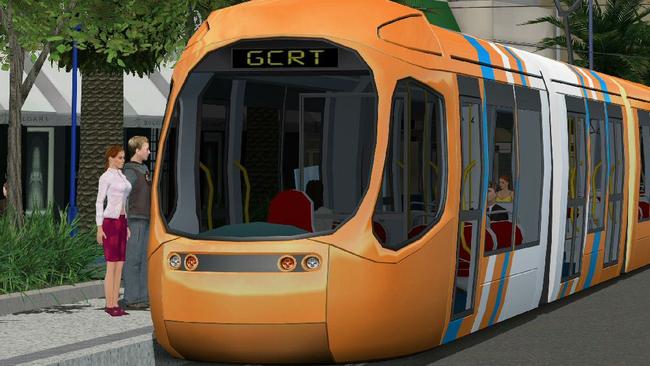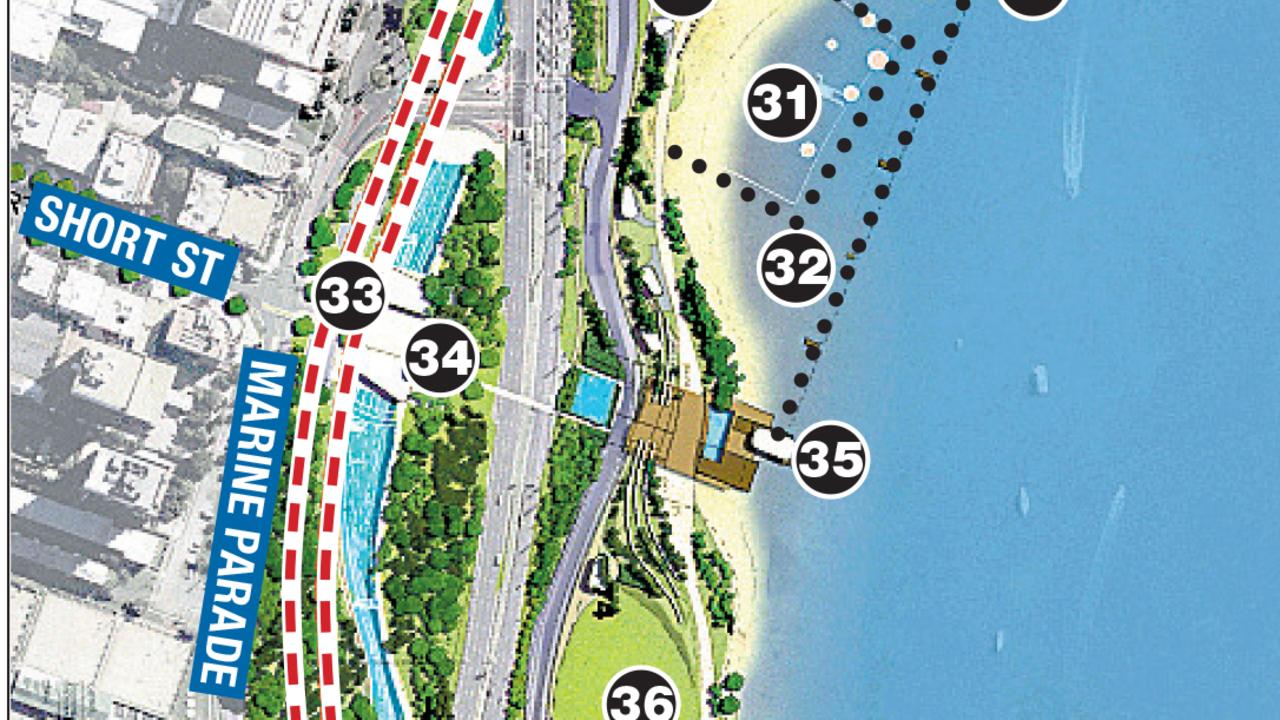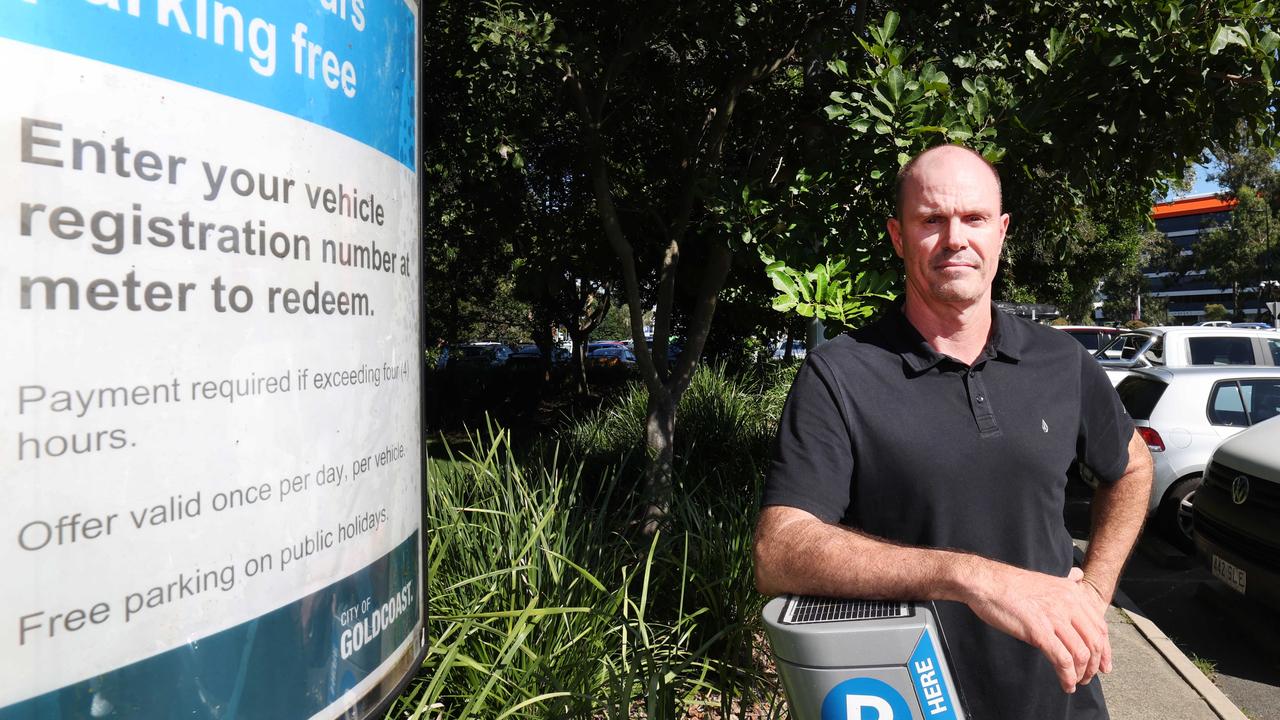Council study shows majority of residents back light rail for southern Gold Coast
A majority of residents and businesses support light rail as a transport option on the southern end of the Gold Coast, according to a new study released by council. But a local councillor says the community has 'grave concerns'. JOIN THE CONVERSATION >>> VOTE NOW
Council
Don't miss out on the headlines from Council. Followed categories will be added to My News.
A MAJORITY of residents and businesses support light rail as a transport option on the southern end of the Gold Coast, according to a new study released by the council.
However Palm Beach councillor Daphne McDonald said her office had been given “sparse information” to provide to residents, who she said had "grave concerns".
A presentation to council’s transport committee on Tuesday will reveal support for the Department of Main Roads and Transport’s multi-modal corridor study between Burleigh Heads and Tugun.
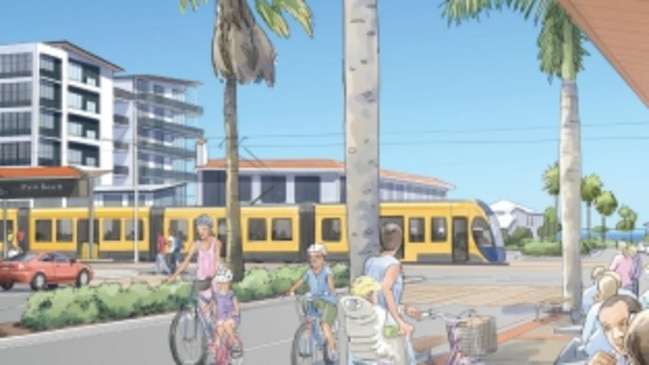
The study considered all transport modes including walking, bike riding, private vehicles and public transport to determine the preferred function of the Gold Coast Highway for the next 20 years.
Researchers investigated several alternative routes parallel to the highway and concluded the southern extension of the trams should follow the coastal route and service the Burleigh village centre, Palm Beach shopping strip, Currumbin Wildlife Sanctuary, Southern Cross University and the Gold Coast Airport.
REVEALED: Real history of light rail on the Gold Coast
The results of the Insights Report to be shown to councillors found 68 per cent of residents and businesses indicated a “level of positive support” for the multimodal corridor study to help improve liveability and connectivity between Burleigh and Tugun.
“There is a clear preference for light rail services over dedicated bus lanes — 58 per cent light rail, 24 per cent bus lane option. The preference is mirrored across residents and businesses,” the report said.
Residents were asked whether they supported trams on the highway or a dedicated bus service to match the capacity of light rail.
About 16 per cent indicated they had no preference.
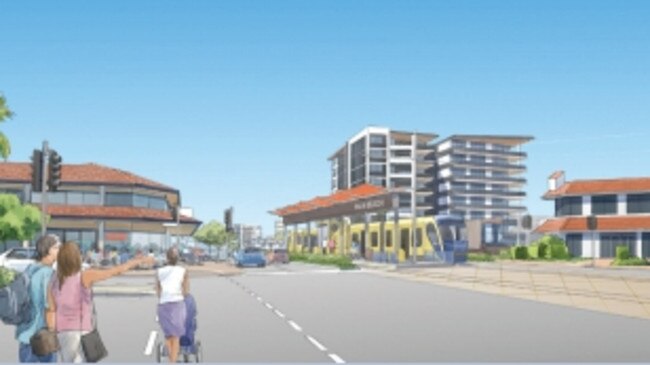
The presentation, to update councillors, said the 13km extension from Burleigh to Coolangatta would provide a safe travel outcome and improve travel times.
TMR was undertaking corridor assessment, council had begun a strategic study and both would conduct community consultation in 2021-22, which included a 12-week program of face-to-face sessions and newsletter drops.
Gold Coast gallery: Best photos in the city in 2021
A timeline shows a detailed business case would begin in the third quarter of 2022.
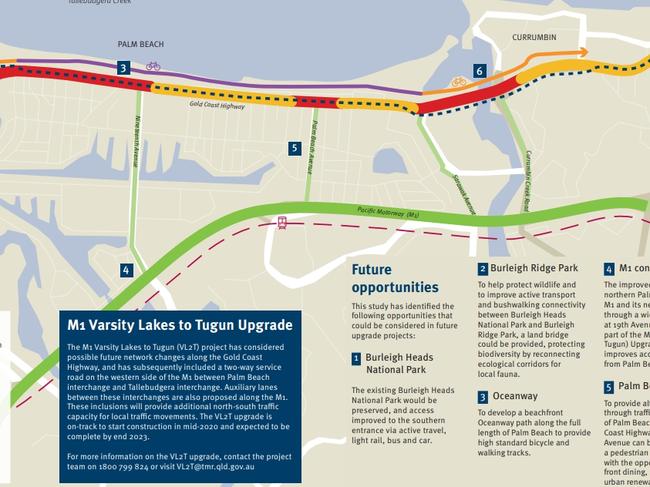
The study highlighted the “important role” of buses as a public transport service. Some bus routes should be shortened or replaced such as the current route 700 and 777 buses along the Gold Coast Highway, while other services would be maintained and improved.
“This study has identified the need for buses to continue to connect communities to the west of the Gold Coast Highway to key centres and interchanges with light rail,” the report said.
Gold Coast tower plans: Our biggest and craziest ideas in recent years
Cr McDonald, who met with transport department officers on May 4, said the community had “grave concerns”, with the route down the narrow Gold Coast Highway to impact on 249 properties and be reduced from four lanes to two lanes.
Transport department officers had indicated the community would have to make a choice between losing car parking or not getting streetscaping in some sections.
“It will impact on surrounding streets and add extra pressure on residential streets in the area,” Cr McDonald said.
REPORT - JULY 2020
ENGINEERS and council say taxpayers will save up to $1 billion if the final light rail link to the airport runs coastal through Palm Beach and Currumbin.
Preliminary track costings for Stage 4 reveal it will cost about $100 million per kilometre, in line with Stage 3.
When broken down, the 11km route down Gold Coast Highway would cost more than $1.1 billion; the estimated 20km West Burleigh link would be upward of $2 billion, and Mayor Tom Tate’s new 14km 19th Avenue proposal about $1.4 billion.
REVEALED: HOW LIGHT RAIL WILL TRANSFORM PALM BEACH STREETS
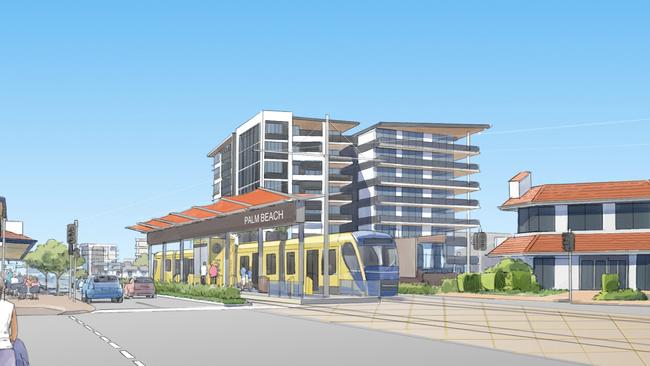
LIGHT RAIL’S NEXT DESTINATION AFTER AIRPORT
Those prices do not include any property resumptions or bridges.
Southport-based businessman and engineer John Howe said delivering the project would be more costly than either stages two or three because of its length and the need to build two bridges.
“The challenges are the crossings over Tallebudgera and Currumbin creeks, particularly because there will be environmental issues in building bridges on the western side of the present highway,” he said.
“This will need very careful consideration, particularly with going through Palm Beach they will need to look at the impact of reducing the highway to two lanes in part and the loss of on-street parking.
“Stage 4 is something which needs to be started early and there must be a lot of consultation with the public — there must be absolute transparency with the community.”
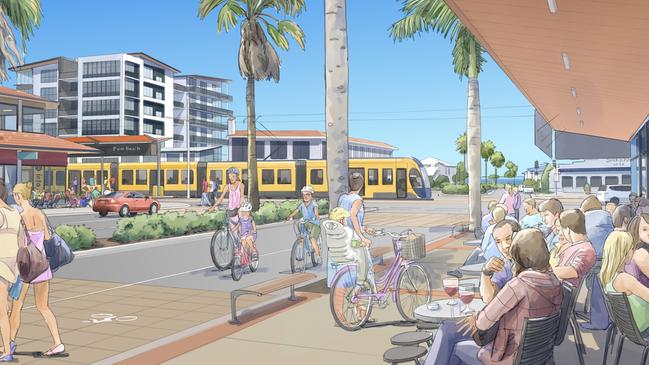
Gold Coast Highway will remain four lanes from Burleigh Heads to just south of Nineteenth Avenue in Palm Beach.
From Nineteenth Avenue to just north of Palm Beach Avenue, the Gold Coast Highway will change to become a two traffic lane boulevard.
The first stage of the tram system from Gold Coast University Hospital to Broadbeach cost $1.7 billion. Stage 2 from Helensvale to Gold Coast University Hospital was about $500 million.
The Broadbeach to Burleigh Stage 3 link, which began construction this year, will cost $709 million before its 2023 completion.
The State Government is yet to commit funding to a business case for Stage 4, but it is expected to cost between $10-12 million.
The Gold Coast City Council committed $1.7 million to that business case in its June budget.
A State Government survey released in late 2018 found 91 per cent of residents who responded backed light rail running to the airport.
CALLS FOR MARSHALS ON GOLD COAST TRAMS
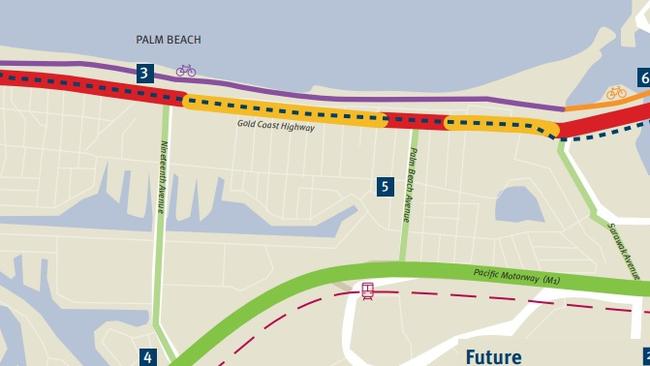
Stephen Harrison, chairman of the Gold Coast Light Rail Business Advisory Group, said a State Government commitment to a business case would continue the momentum from Stage 3.
“The connection to the airport will be an incredible important part of the city’s network and the quicker we can get efficient and effective public transport there the better,” he said.
“If we can get the more complex engineering and building approvals out of the way, all we will need to do is construct it, once a business case, community consultation and funding are sorted.
“Community consultation will be very important and must be done to address the concerns of stakeholders.”


